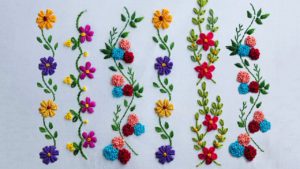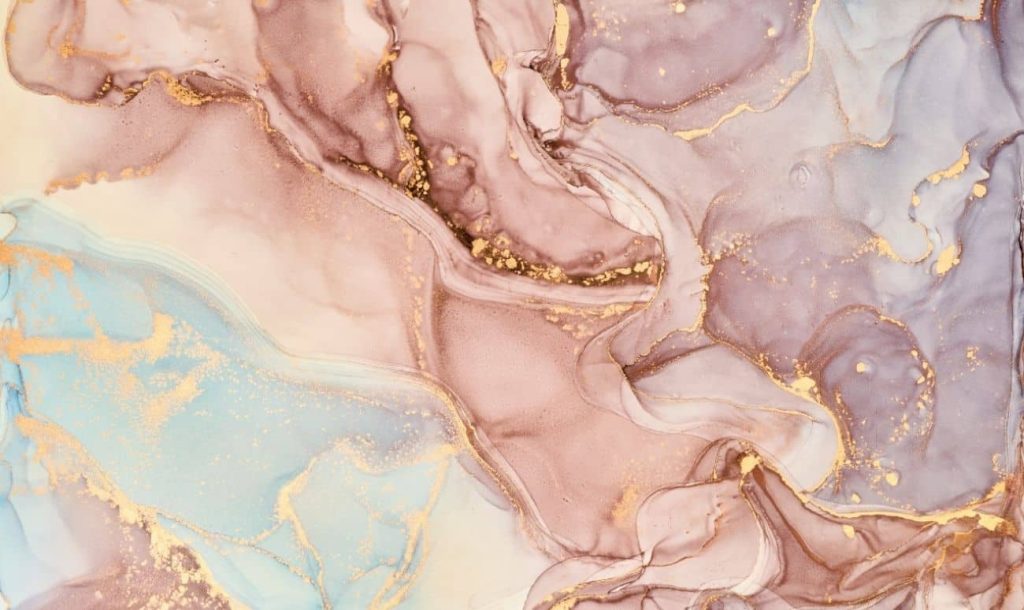Every cross-stitch piece, lovingly made with passion and care, and they are greatly loved.
But what makes a piece incredible?
Cross-stitch embroidery is making a significant comeback in the present creative environment, despite the fact that it has been there since the middle times. This method of hand embroidery is now commonly available as framework, often featuring endearing, anachronistic messages or motifs.

It was traditionally in use to decorate household items like table linens. But now it is commonly in use as framed art, often featuring quirky, anachronistic messages or motifs. Cross-stitch may be an accessible, easy-to-learn, and enjoyable thread craft, regardless of the project or the needleworker’s skill level.
Modern craftsmen and craftspeople are resurrecting cross stitch. Cross stitching is a simple skill to pick up. Therefore, Podium has prepared a quick rundown on cross-stitch that will have you sewing in no time!
What Exactly Is Cross-Stitch?
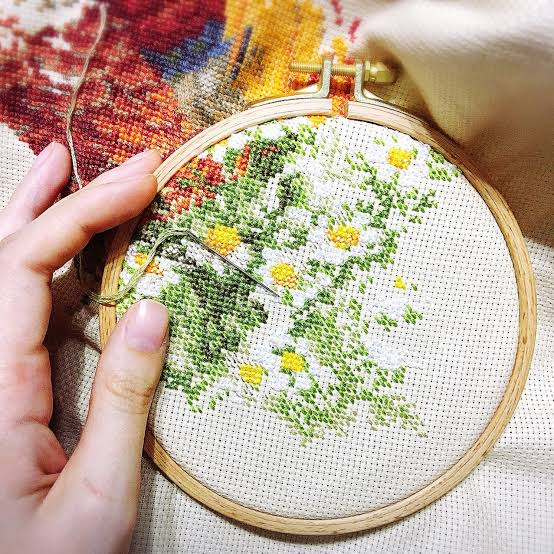
Cross stitch is a type of numbered thread embroidery that has been around for a long time and is one of the most simple hand embroidery techniques to master. Cross stitch is a technique that involves making X-shaped stitches on a fabric with an even and open weave, such as Aida or linen. You can pick traditional, modern, or a mix of the two.
Cross-stitch also necessitates the use of colourful embroidery floss, which is normally made in six-strand skeins. The majority of cross-stitch charts require the stitcher to separate two to three strands at a time.
Cross-stitch may appear more complex and simpler than needlepoint, which uses a variety of shapes and sizes of stitches. But it is perfectly capable of producing elaborate, beautiful designs. Kits for cross stitch projects are common, but you may also buy fabric, thread, and other basic ingredients to make your own.
There are several ways to stitch a design including:
- the cross-country approach, which stitches one colour at a time,
- the parking method, which stitches one block of cloth at a time and “parks” the end of the thread at the next location where the same colour appears in the pattern.
Types Of Cross-Stitch
Double Cross-Stitch
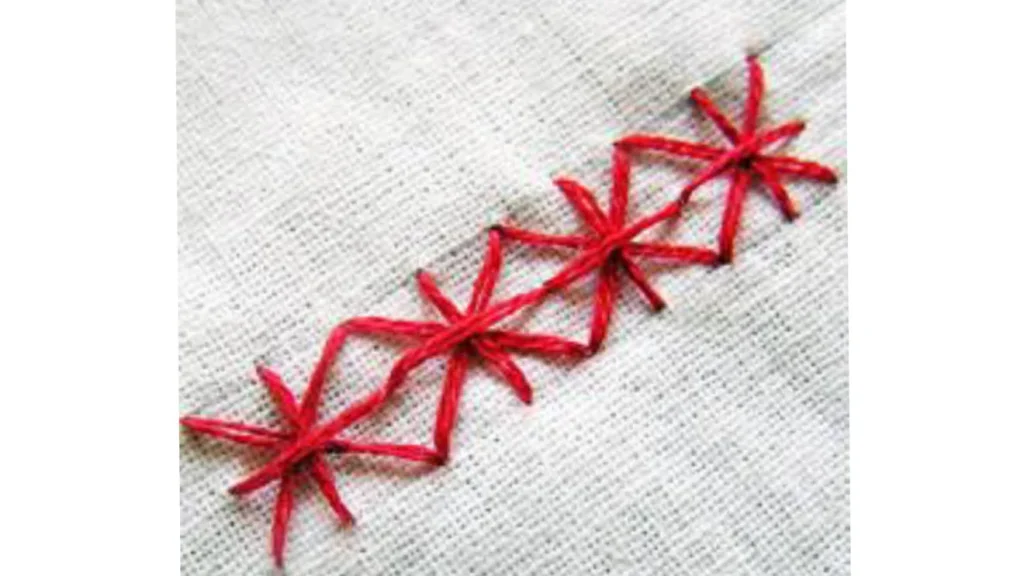
- A double cross stitch has two additional legs, horizontally and vertically, than a basic cross stitch.
- Make the cross stitches first, then add the vertical and horizontal stitches on top.
- You can also call it Smyrna cross stitch, which is a more fancy moniker.
Rice stitch

This stitch begins with a row of cross stitches, followed by a four-legged star stitch, typically in a contrasting colour thread, in the spaces between the cross stitches.
Herringbone stitch
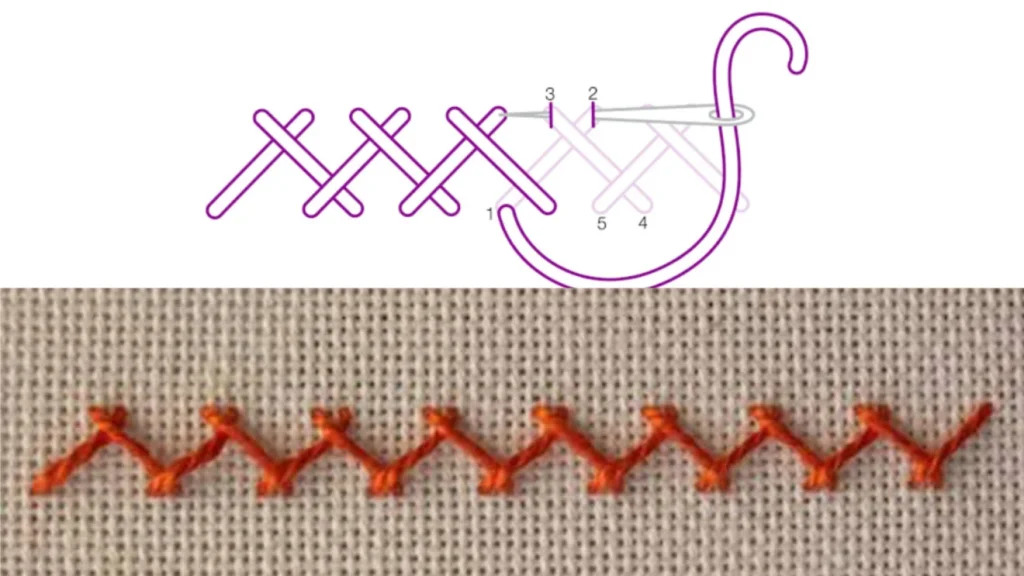
- Between two parallel lines, the herringbone stitch is made (imaginary or drawn).
- Between the lines, a pattern of crisscrossed diagonal stitches are formed.
- These stitches will appear as parallel rows of running stitch on the opposite side of the fabric.
Italian Cross Stitch
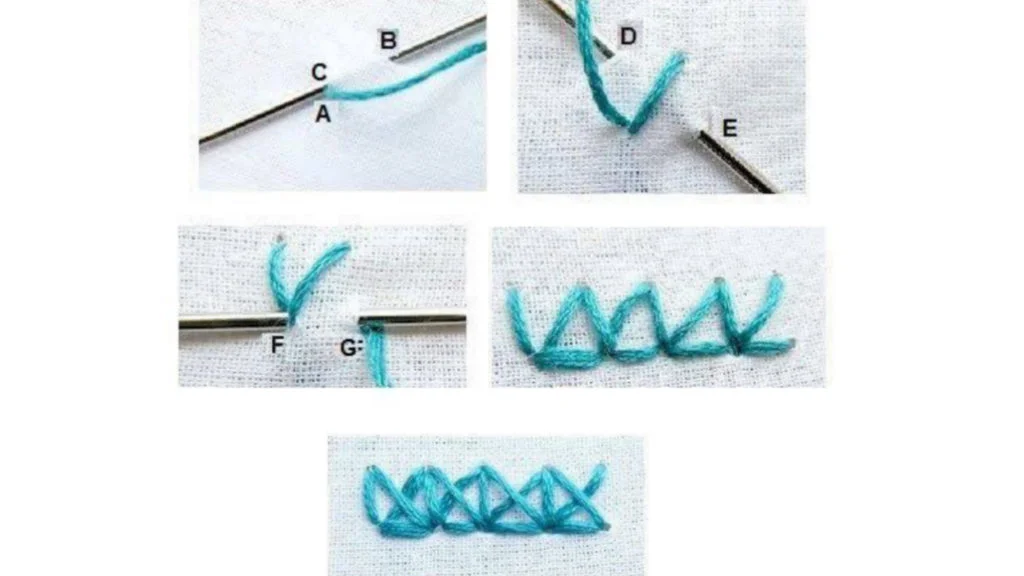
- This Cross-Stitch pattern is the one with borders.
- It will resemble a box full of cross stitches when completed row by row.
Hungarian Cross Stitch
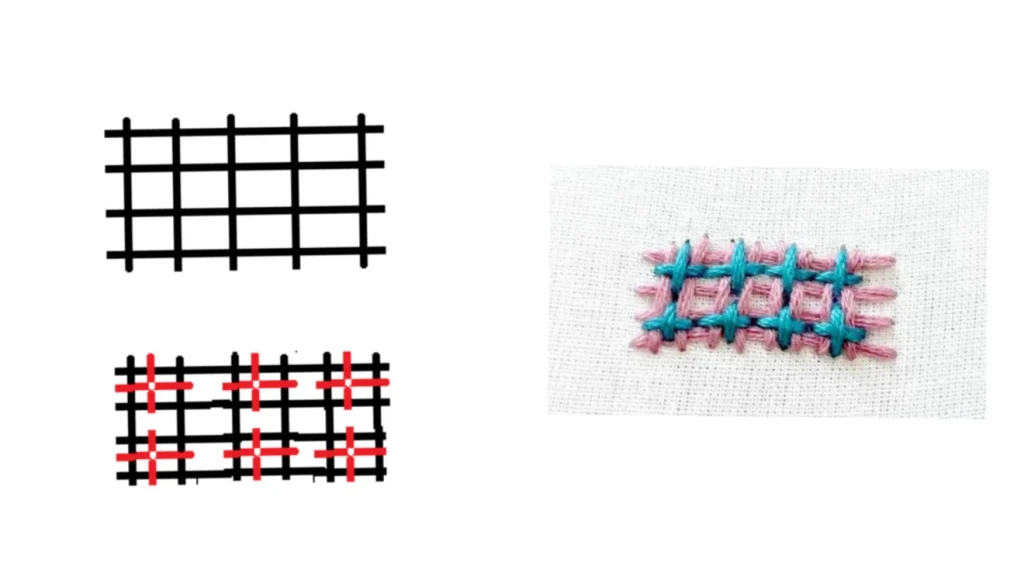
- This stitch consists of a cross-stitch done over a thread that has been put down.
- Work upright cross stitch in between the spaces of a grid pattern like the one shown above.
Long Armed Cross Stitch
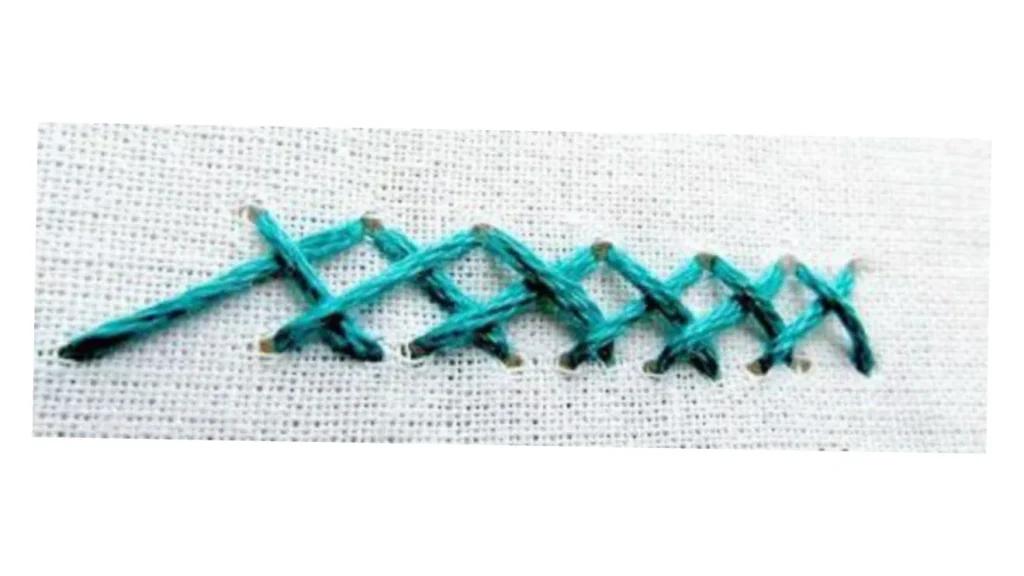
- This is a cross-stitch with one leg that is longer than the other.
- As a result, it begins where the preceding cross stitch ends.
Some Points To Remember
Point 1
- A cross-stitch chart contains all of the information you’ll need to know about where to stitch and which colours to use. The chart’s grid correlates to the fabric’s weave, and each colorful square on the chart represents a cross stitch.
- It’s a good idea to begin stitching on a new cross-stitch project in the middle of the design. You can ensure that your pattern is centred in the fabric this way. Small arrows on the margins of a cross stitch chart represents the centre points.
Point 2
- Examine your chart and begin by locating an area near the centre. Starting with a broad block of colour rather than a section of the pattern that changes colour frequently can make things easier.
- Aida and linen are the most popular fabrics for cross stitching. Both materials come with a proclivity for fraying when cut. Bind the edges before you begin stitching, especially if you are sewing a large project that will require a lot of handling.
- Sew the edges with a zig-zag stitch or a serger if you have one to prevent fraying. You may also use masking tape to bind the edges if you don’t want to stitch them.
Point 3
- There are a variety of embroidery hoops and frames to choose from. It is entirely up to you whether or not to utilise one. Beginner stitchers may find it easier to use an embroidery hoop to hold their cloth.
- Cut a string of floss about 18 inches long in the colour you want to start with. If much longer than this, the thread will be more prone to knot. Stitches should have a lovely, effortless tension. Don’t pull them too tight or too loose, as this will cause the cloth to distort. The stitches should not pull on the fabric and should lie flat on it.
- Continue stitching until the thread runs out or you run out of stitches in your pattern. Pass the needle under at least three finished stitches on the back side of the fabric to secure the thread. Trim the remaining thread with care to avoid cutting it too close.
Point 4
- Purchase all of the materials you’ll need for a project up front. Thread usually sold in dye lots, which may differ somewhat from batch to batch.
- The thread will tend to twist as you stitch. Allow your needle and thread to dangle freely every now and then to allow it to unravel.
- Not to mention the fact that Enjoy it! Cross stitching is a pleasurable and calming hobby. Relax and enjoy the process.
Final Thoughts
Craft hobby projects range from knitting and crocheting to paper and clay crafts, soap making, and candle making. Making art using paper, clay, sand, or any other materials allows kids to learn, experiment, and keep themselves occupied without being tied to a phone or tablet screen.
Due to our increased reliance on technological devices, these are much-needed alternatives for keeping children engaged in a healthy way. Art and crafts bring people closer together. These activities can bring kids together, establish friendships, and teach them to appreciate one another.
Podium School is confident in your abilities to succeed in any endeavour. This is why we provide you with regular updates on everything from creative techniques to the latest equipment to help you start your adventure. Stay tuned to Podium School for additional updates on the numerous benefits of creative and performing arts.
Don’t forget to read our latest article on Art for Children: How To Improve Your Art Style and Create Original Art.
Share with your friends

